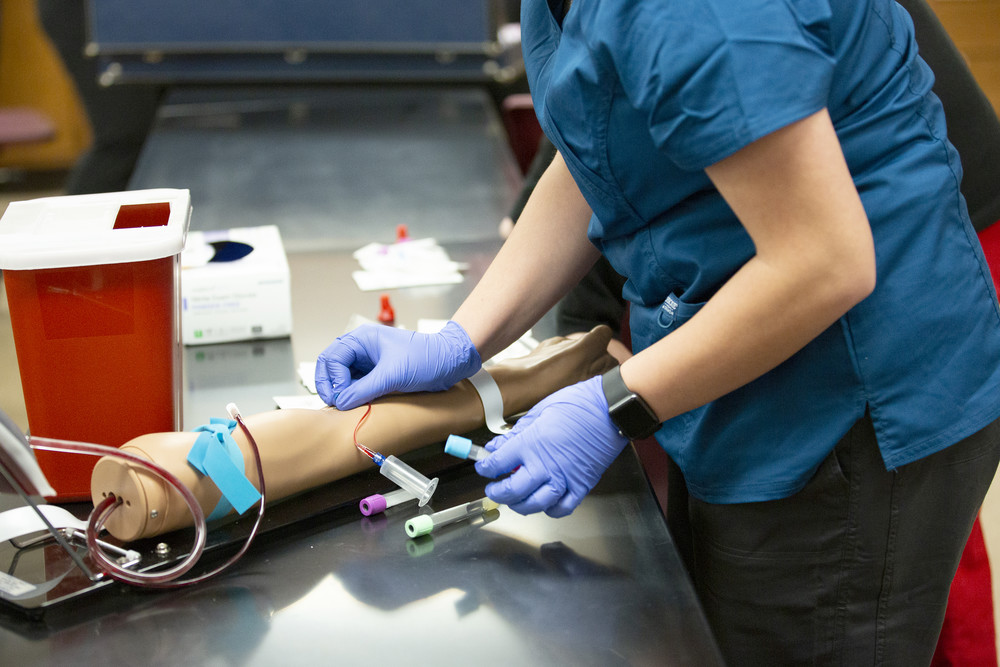
Phlebotomy is a specialized area of clinical laboratory work that involves drawing blood from patients for various medical tests, transfusions, research, or blood donations.
Phlebotomists are trained healthcare professionals who carry out these tasks.
How to become a Certified Phlebotomist
Becoming a phlebotomist involves several steps:
- High School Diploma or Equivalent: The first step to becoming a phlebotomist is to obtain a high school diploma or equivalent.
- Phlebotomy Training Program: Next, you’ll need to enroll in a phlebotomy training program. They typically include both classroom instruction and hands-on training in drawing blood.
- Certification: While not always required, many employers prefer to hire phlebotomists who are certified. To become certified, you’ll need to pass an exam and, in some cases, complete a certain number of successful blood draws.
- Gain Experience: After completing your training and obtaining certification, you’ll start to gain experience as a phlebotomist. This might involve working in a variety of settings, such as hospitals, blood donation centers, or outpatient clinics.
- Continuing Education: As with many healthcare professions, continuing education is important for phlebotomists. This might involve taking additional courses or attending workshops to stay up-to-date with the latest practices and technologies in phlebotomy.
Remember, requirements can vary by state, so it’s important to check with your state’s health department to understand the specific requirements in your area
Reasons to Become a Phlebotomist
Choosing a career as a Phlebotomist can be a rewarding decision for several reasons:
- Helping Others: As a Phlebotomist, you play a crucial role in patient care. Your work directly contributes to diagnosing and treating illnesses, which can have a significant impact on patients’ health and well-being.
- Growing Demand: The healthcare industry is one of the fastest-growing sectors, and the demand for skilled Phlebotomists is on the rise.
- Quick Entry into Healthcare Field: Training to become a Phlebotomist typically takes less time compared to other healthcare professions. This allows for a quicker entry into the healthcare field, making it an excellent choice for those eager to start their careers.
- Stepping Stone: Working as a Phlebotomist can also serve as a stepping stone to other careers in healthcare. The experience and skills gained can be beneficial if you decide to advance your career, perhaps becoming a nurse or a medical laboratory technician.
- Variety and Flexibility: As a Phlebotomist, you can work in a variety of settings, including hospitals, diagnostic laboratories, blood donation centers, and doctor’s offices. There are opportunities for both full-time and part-time work, offering flexibility.
- Continuous Learning: The field of phlebotomy offers continuous learning opportunities. As medical technology advances, you’ll have the chance to update your skills and knowledge, making it an exciting field for lifelong learners.
Career Outlook
The career outlook for Certified Phlebotomists is quite promising.
According to the U.S. Bureau of Labor Statistics, employment of phlebotomists is projected to grow 8 percent from 2022 to 2032, which is faster than the average for all occupations.
This growth rate suggests that there will be a steady demand for phlebotomists in the coming years.
In terms of salary, the median annual wage for phlebotomists was $38,530 in May 20221.
However, salaries can vary depending on factors such as location, level of experience, and the specific healthcare setting.
A career as a Certified Phlebotomist offers a positive job outlook with competitive salary prospects.
Also read: